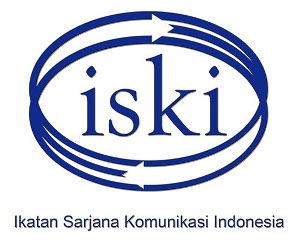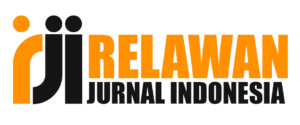- Focus and Scope
- Section Policies
- Peer Review Process
- Publication Frequency
- Open Access Policy
- Archiving
- Publication Ethics
- Article Processing Charges
Focus and Scope
The Communication Studies Program of the Faculty of Social Sciences and Humanities (FISH), Bunda Mulia University publishes the scientific journal "SEMIOTIKA" on a regular and irregular basis in accordance with the published period every semester (6 months), namely June and December. According to Eco (1979:9-14), the editor of the journal "SEMIOTIKA" provides lecturers and researchers with the broadest range of options in the 19 fields that comprise SEMIOTIKA scientific study material, including:
- Zoo-semiotic
- Olfactory signs
- Tactile communication
- Code of taste
- Paralinguistics
- Medical semiotics
- Kinesics and Proxemics
- Musical codes
- Formalized languages
- Written languages, unknown alphabets, secret codes
- Natural languages
- Visual communication
- System of objects
- Plot structure
- Text theory
- Culture codes
- Aesthetic texts
- Mass communication
- Rhetoric
The advancement of semiotic studies outside of the domains mentioned by Umberto Eco above indicates auspicious progress. The terms Communication Semiotics, Media Semiotics, Sign Semiotics, Product Semiotics, Packaging Design Semiotics, Visual Design Semiotics, Architectural Semiotics, Marketing Semiotics, Linguistic Semiology, Hermeneutics, and Biosemiotics all have opportunities for field dissemination in this journal as a result of various studies.
Considering that science will create the largest possible space in accordance with the complexity of human civilization's advancement in understanding meaning and signals, the editors do not rule out the possibility of future breakthroughs in the field of SEMIOTIKA that have been mentioned above. The carefully chosen top-notch scientific publications are first-person, unpublished works that make use of the most recent scholarly sources.
Section Policies
Articles
Peer Review Process
In the reviewing process, there are at least two reviewers for each manuscript in the related topic. In addition, the author(s) can also propose the candidate of reviewers. Judgment from the first reviewer will be the main priority for the editor to make a decision if there are only two reviewers. In the case of three reviewers, the decision will be made from at least two reviewers. Three weeks will be needed for a reviewer to complete one round reviewing process.
Generally, the candidate of reviewers will be chosen based on their reputation in the international publication number and quality. Next step, The Editor sends the invitation letter for each candidate of the reviewer. After the candidate of the reviewer informed their availabilities for the reviewing process, the Editor creates an account for each reviewer and then send the manuscript by OJS.
All reviewing process are in double-blind review and managed by editor in the OJS.
Articles are evaluated on the criteria outlined below.
The appropriateness or fit for the mission of the Social Science, Economic Science, and Humanities
The significance in contributing new knowledge (advancing a field of study, or providing best practices or lessons-learned);
The rigor and appropriateness of the scholarship; and
The readability and flow of the information and ideas presented.
Additional criteria based on the following manuscript types: as a research article, as a reflective essay; as a project with promise article; as a dissertation abstract; or as a book review.
Publication Frequency
Tim redaksi SEMIOTIKA: Jurnal Komunikasi akan menerbitkan setiap volume terdiri dari dua (2) edisi per tahun (Juni dan Desember) yang masing-masingnya akan berisi delapan (8) artikel hasil penelitian yang relevan
Open Access Policy
This journal provides immediate open access to its content on the principle that making research freely available to the public supports a greater global exchange of knowledge.
Archiving
This journal utilizes the LOCKSS system to create a distributed archiving system among participating libraries and permits those libraries to create permanent archives of the journal for purposes of preservation and restoration.
Publication Ethics
Publication ethics are created using LIPI Head Regulation No. 5 of 2014. Journal managers, editors, Reviewers, and writers are all subject to this code of ethics.
obligations and liabilities of the journal manager
- Identify the editorial board's members.
- respect for contributors' privacy, including authors, editors, and reviewers
- Review journal policies and inform authors, editorial board, reviewers, and readers about the results.
- Establish a code of behavior for Reviewers and editors.
- Regularly release the semiotic journal.
- Prepare licenses and other legal requirements
- Journal managers have relationships with editors and Reviewers and offer them freedom to review and modify papers.
- Relationships with authors, journal editors' provision of instructions and writing formats, and notification of the acceptance or rejection of works for publication.
obligations and liabilities of the editor
- Strive to sustainably improve publishing quality;
- Introduce a procedure to verify the validity of published works;
- Preserve the credibility of the author's academic record.
- While the author is ultimately responsible for the article's content and all of its statements, the editor is in charge of the article's style and format.
- Encourage authors to make changes to their articles until they are publishable.
- The journal's editor evaluates each entry fairly. no one is subject to discrimination
- The editor evaluates submissions for relevance to the field, originality, clarity, study validity, and adherence to the journal's scope before accepting them.
- The editor offers Reviewers with guidelines on the criteria for reviewing an article.
- The editor ensures the Reviewer’s name is kept private when analyzing an article.
- The editor urges reviewers to offer assessments of the articles' substantive subjects and to offer helpful feedback.
- The editor thanks the reviewers for their contributions to the journal.
- The editor keeps an eye on how Reviewers are doing and makes sure they meet high criteria.
- The editor looks for Reviewers' participation on a national and international scale.
obligations and liabilities of Reviewers
- Complete the assignment from the editor to determine whether an article should be published in the Semiotics journal.
- Encourage writers to better articles by offering feedback, comments, advice, and criticism
- Keep the findings of repairs, comments, and recommendations private by not sharing them.
- Review the article's content rather than its language, punctuation, and typos.
- Uphold the tenets of accuracy, originality, and authenticity; give priority to writing's positive effects on the advancement of science, technology, and innovation; and recognize how writing affects the advancement of science.
- Is not swayed by relationships with friends, rivals, or coworkers that might produce suggestions for decisions that are not objective.
- Ensure that the findings in the article are kept confidential until they are published.
- Have a thorough understanding of the relevant fields of expertise so they may conduct accurate and appropriate article reviews.
- Refuse to perform a review if the given material is outside of your area of expertise
- Do not criticize the author personally.
- Do not communicate with the author in order to evaluate the work.
- The review's findings are presented honestly, fairly, and with convincing justifications.
obligations and liabilities of the author
- The author makes sure the names on the list of authors are those who have contributed to the articles and meet the requirements for authors.
- The article's methodologies, analyses, computations, and other specifics are all the responsibility of the author.
- The author declares that the article submitted for publication is unique, has never been published elsewhere in any language, and is not currently in the process of being submitted to another journal.
- The author promptly responds to comments made by review partners in a professional and timely manner.
- The article's citations and author's use of them are appropriate references to other authors' works.
Article Processing Charges
Semiotika: Jurnal Komunikasi retains free of charge for all author(s) which interest in publishing in this journal













